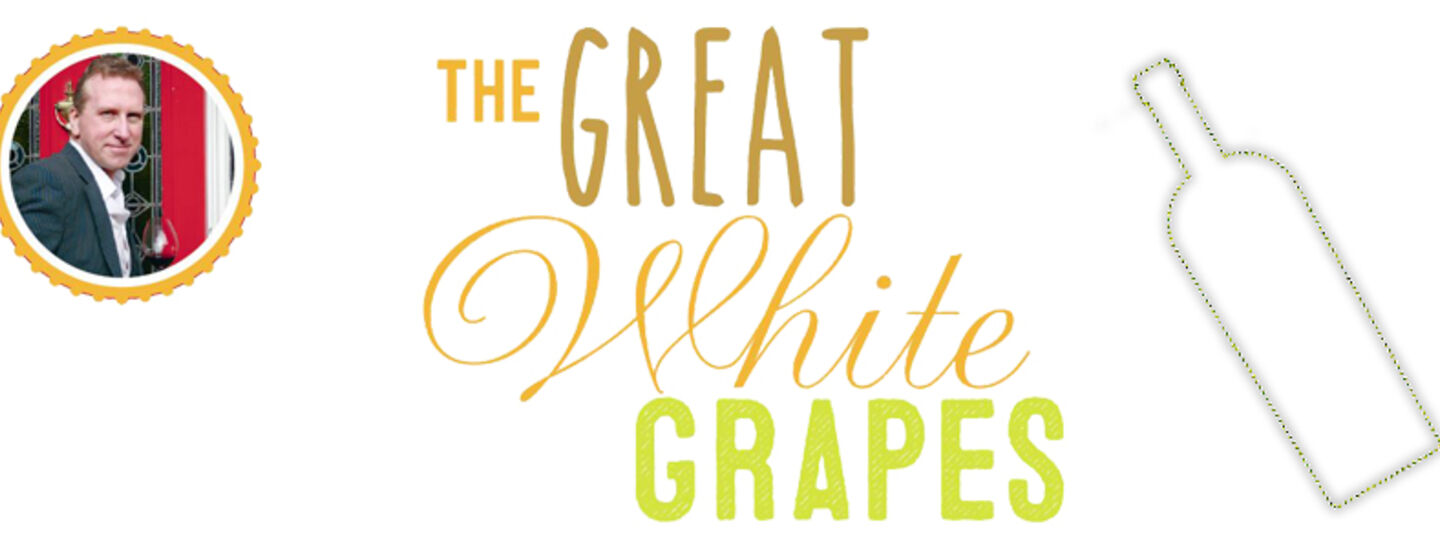The Great White Grapes
The world of the white grape is a large one, so Leslie Williams has selected some highlights and matched their unique notes with the ideal food.
There is no great mystery to wine. When you crush grapes and add yeast, the sugar in the grape juice is converted into alcohol and the end result is wine. The juice from almost all grapes is naturally clear. Red wine gets its colour from prolonged contact with the grape skins, but white wine grapes add little colour and skins are usually removed after pressing to ensure a crisp texture and a neutral colour. White wine is usually fermented in stainless steel tanks at cool temperatures, but some, usually expensive, wines are fermented in barrels to add certain flavours and complexities. Many wine drinkers stick with their favourite Marlborough Sauvignon Blanc or Italian Pinot Grigio, but there is so much more to explore in the world of white wine. Most of the popular international white grape varieties originate in France, such as Chardonnay, Sauvignon Blanc and Vouvray’s Chenin Blanc, along with many others. But you’d be missing out if you didn’t swot up on some Italian and Spanish varieties, such as fragrant Moscato, light, crisp Vermentino and Pinot Grigio, or Pinot Gris, as it’s known in France, where it tends to be a little softer. Germany’s white wines have given the world floral, spicy Gewürztraminer and the deliciously dry Riesling. Both grapes are now grown internationally and Aresti’s Gewürztraminer from Chile is a good example of the style.
Chardonnay
Chardonnay originates in Burgundy and is the only white grape used in 99% of wines from the region. A classic example is André Goichot Chablis, perhaps the purest expression of the grape. Chablis is mostly made without oak and has a fine stony freshness and a crisp citrus character. Chablis is the classic match for oysters and white fish, such as sole. Chardonnay from New World countries such as Australia or Chile tends to be richer due to the warmer climate. Nugan Dreamer's Chardonnay has minimum contact with oak but nevertheless has a tropical fruit character and a rich mouthfeel that will match well with creamy pasta dishes.
Sauvignon Blanc
Sauvignon Blanc is grown in Bordeaux, where it’s often blended with Semillon, and in the Loire Valley vineyards such as Sancerre and Pouilly-Fumé. Guy Saget Pouilly-Fumé has classic chalky and citrus aromas but is also soft on the palate, with floral touches. New Zealand Sauvignon tends to be a little riper. Coopers Creek Sauvignon Blanc has a richer gooseberry character but is still dry and crisp with lots of acidity. Both of these Sauvignons will work well with seafood and young cheese, such St Tola goats’ cheese.
Albariño & Godello
Spain has a number of native white varieties, but the two most fashionable at the moment are Albariño and Godello from the north-western part of the country. Both grapes are fragrant but dry, with Abellio Albariño smelling of peaches with a weighty character and a dry finish. Armas de Guerra Godello has a soft, ripe apple character that also finishes dry. Both will match well with pan-fried fish and spicy Thai or fragrant Chinese food.
Riesling
Germany makes some sweet Riesling, but almost all grown in France or New World regions such as Australia’s Clare Valley are bone dry. Lone Kauri Riesling from Marlborough in New Zealand has a light fl oral character and some dry lime and lemon citrus flavours, making it a fine match for fresh mackerel or perhaps with some Gubbeen or Comté cheese.
Mixing It Up
These are just a few of the best-known white grapes you’ll see on the shelves, but remember that as with red wine regions such as Bordeaux and the Rhône, you will also have grape blends, from classic Sauvignon-Semillon in Bordeaux to innovative ones such as the Barone Montalto Passivento blend of local grape Catarratto with Viognier, Sauvignon and Moscato.

